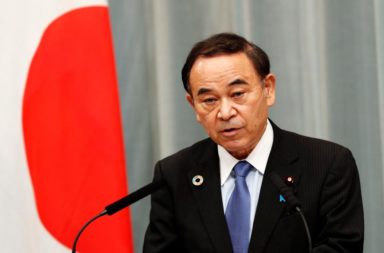The United States formally exited the Paris Climate Agreement amid election uncertainty, three years after President Donald Trump announced his intent to remove the country from participating in the landmark global pact to reduce greenhouse gas emissions. President Donald Trump’s administration had notified the United Nations last year of the US withdrawal from the accord. The mandatory one-year waiting period required for it to exit ended on Wednesday. The historic accord seeks to limit global warming to less than 2 degrees Celsius, the value that climate scientists have determined will have disastrous consequences if exceeded.
Trump has repeatedly criticised the agreement as economically detrimental and claimed it could cost the country 2.5 million jobs by 2025. He also said it gave other major emitters, like China and India, a free pass. The US is the only country to withdraw from the global pact. It can still attend negotiations and give opinions, but is relegated to ”observer status”. Trump stated that he intended to renegotiate the details of the United States’s membership within the Paris Agreement that can better protect US workers in industries like coal, paper, and steel.
UN Secretary-General Antonio Guterres had earlier called the decision by the US to withdraw from the Paris Agreement on climate change as a “major disappointment for global efforts to reduce greenhouse gas emissions and promote global security. “The Paris Agreement was adopted by all the world’s nations in 2015 because they recognize the immense harm that climate change is already causing and the enormous opportunity that climate action presents. It offers a meaningful yet flexible framework for action by all countries,” Guterres had said.
The United States is the world’s second-biggest emitter after China of heat-trapping gases such as carbon dioxide and its contribution to cutting emissions is seen as important, but it is not alone in the effort. In recent weeks, China, Japan and South Korea have joined the European Union and several other countries in setting national deadlines to stop pumping more greenhouse gases into the atmosphere. While the Trump administration has shunned federal measures to cut emissions, states, cities and businesses in the United States have pressed ahead with their own efforts.
The US State Department last year said, “The United States has reduced all types of emissions, even as we grow our economy and ensure our citizens’ access to affordable energy. Our results speak for themselves: U.S. emissions of criteria air pollutants that impact human health and the environment declined by 74% between 1970 and 2018. U.S. net greenhouse gas emissions dropped 13% from 2005-2017, even as our economy grew over 19 percent.” “In international climate discussions, we will continue to offer a realistic and pragmatic model – backed by a record of real-world results – showing innovation and open markets lead to greater prosperity, fewer emissions, and more secure sources of energy,” the Department had said.
Democratic presidential candidate Joe Biden, meanwhile, has vowed to rejoin the Paris accord as soon as he is inaugurated and to make the US a global leader on climate action. “Biden has vowed to re-enter the Paris accord if elected, a move that could take less than six months, ” Varun Sivaram, a senior research scholar at Columbia University’s SIPA Center on Global Energy Policy, told.
While Biden’s climate plan has been recognized as the most ambitious the US has ever proposed, it still may not hit the mark, according to some critics. Republicans have criticized Biden’s climate plan as being too expensive, with Vice President Mike Pence describing it as “a USD 2 trillion version of the Green New Deal” during his debate with Democratic rival Senator Kamala Harris last month.





